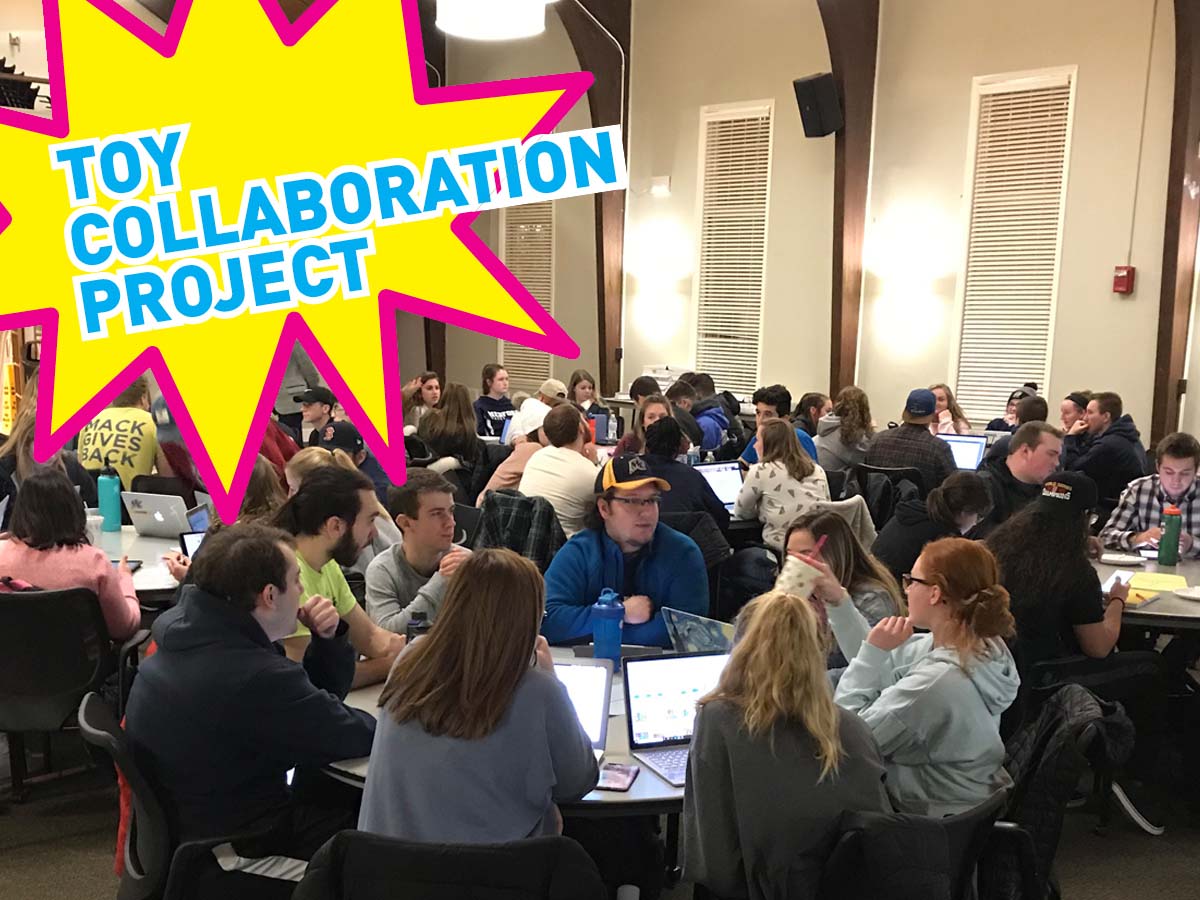Nancy Wynn
Associate Professor
Merrimack College
Nicholas Paolino
Undergraduate Design Researcher
Merrimack College
Much child development research is biased towards privileged, white, mid-socioeconomic cultures. For example, data suggests mothers should use child-directed speech to promote language development (Rowe, 2008). Yet, recent evidence shows this type of talk is not promoted universally (Rowe, 2012). As a result, educational and clinical practices, as well as policies, may not address the needs of non-white, under-privileged populations. During the spring semester of 2019, three Merrimack College professors created an interdisciplinary project to promote positive development in infants/toddlers. The project’s goal was the development of a toy prototype that addressed specific developmental domains and considered various populations.
Courses from three different schools collaborated on the project: Applied Infancy Development, Machine Design, and Graphic Design 3. Students enrolled in discipline-specific courses were divided into eight groups, each consisting of one Graphic Design student and multiple students from Education and Mechanical Engineering. The modes for assessment were completion of the toys, marketing materials, and the development of collaboration skills.
Education students were the researchers and “clients.” Engineering students created the toy prototypes. Graphic design students designed marketing materials including branding, packaging and advertising. Throughout the semester, students met in large group meetings, virtual group meetings, made oral presentations, and publicly demonstrated their final designs. The pedagogical plan was to adopt a peer model whereby students could teach their peers what they learned in their respective disciplines and work together to synthesize their ideas.
Despite some challenges, the teams completed their prototypes and branding with much success. Afterwards, project assessment included: What changes should be implemented? Were the virtual meetings beneficial? Who might gain from inclusion—business students and marketing faculty? Additional funding?
The project captured the professional world of toy design quite well, and the faculty members are planning for round two in 2022.
This research was presented at the Design Incubation Colloquium 6.3: Fordham University on May 16, 2020.
